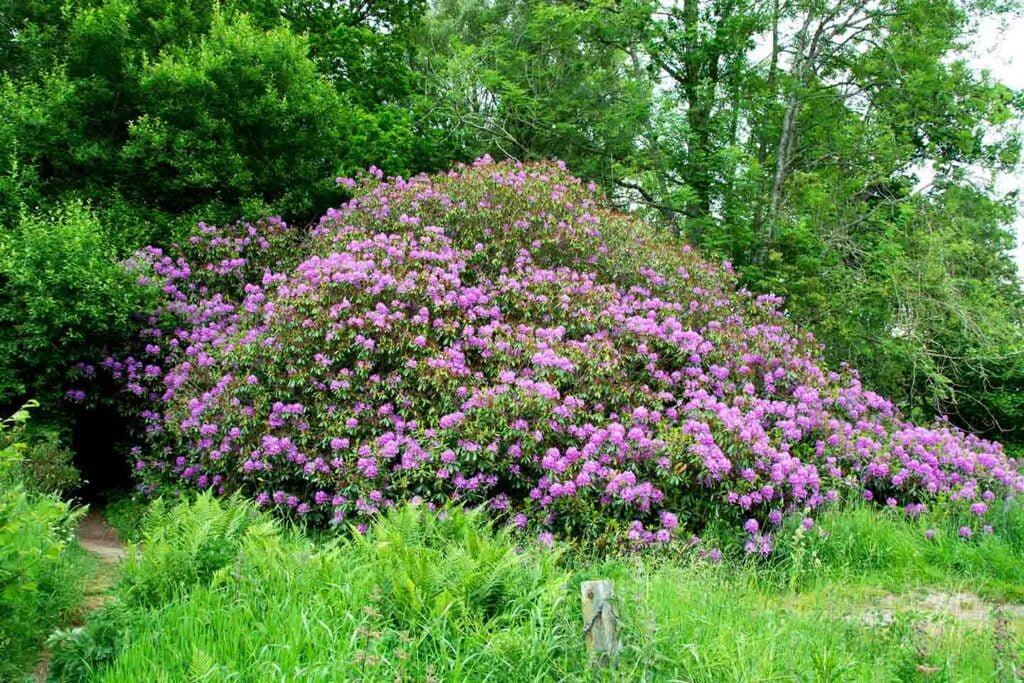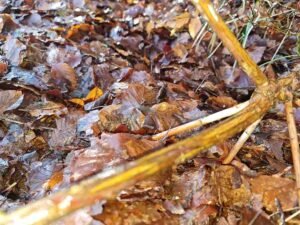Rhododendron Ponticum

I personally love these plants. They’re beautiful, showy and really make a massive splash of colour in the landscape. They are stunning. BUT. They are an ecological nightmare! It doesn’t matter how much I love them – they are still a nightmare. And that’s why, in Scotland, they are classified as a non native invasive plant under the Wildlife and Countryside Act 1981 (as amended by the Wildlife and Natural Environment (Scotland) Act 2012.)
Despite this, it is perfectly legal to go to a garden centre and buy a R. ponticum for your garden. So, if you are planning getting a rhododendron please check it’s one the many other varieties rather than R. ponticum.
What Does a Rhododendron Ponticum Look Like?
It is a large woody plant which can be 3.5m tall. It has dark green, thick, glossy evergreen leaves. As the plant ages its woody stems look more like tree trunks. It has stunning flowers which are clusters of 14 to 25 bell-shaped flowers. Normally they can be in a range of colours from pinky-lilac to dark lilac. They normally flower in the woodland in May – June.

What harm do they do?
- They can take over the landscape – in the above photo this R. ponticum has completely covered two paths, and people have had to detour to get around it
- They contain Grayanotoxins (a neurotoxin) – in the leaves, roots and stems
- They can spread plant diseases – one of which is Phytophthora ramorum – also known in the UK as ‘larch tree disease’, ‘Japanese larch disease’ (although European and hybrid larch are also hosts) and ‘sudden larch death’.
- Reduces biodiversity
- they spread really quickly
- they shade out natural vegetation
- toxins such as allellopathic chemicals seep into the soil (for example polyphenols) which can inhibit the growth of other plants
- leaf litter is slow decaying and causes soils to be low in nutrients and infertile
- over time it causes the eco-system natural balance to change
How do they spread?
Seed
- Usually flower after 12 – 20 years of growth, (although in the neighbouring woodland I’ve seen them take only a handful of years)
- Mature plants can produce 1 million seeds per year – I know, imagine how many plants one R. ponticum can spread in its lifetime.
- The seed is really light so is easily distributed by wind / breeze
- Seed can spread up to 500 m from parent plant
- Seeds remain viable for around 1 year
Layering
- Branches re-root where they touch the soil
- collapsed and fallen branches can re-root
- layering is a slow process and normally only seen at the edges of a plant / stand
- causes dense interwoven stems in areas where seed germination wouldn’t be suitable and where seedlings would normally die.

Garden waste
This means of spread is very often missed out but if you have a R. ponticum in your garden and you dead head it, or cut it back what are you doing with those cuttings? If you:
- dump plant material into the countryside, or
- dump soil that contains seeds (and as they are so small and light, you probably won’t know they’re there)
then you could be contributing to the problem, and inadvertently breaking the law.
Legal responsibilities
Rhododendron ponticum is classified as a non native invasive plant under the Wildlife and Countryside Act 1981 (as amended by the Wildlife and Natural Environment (Scotland) Act 2012.). This means anyone who has a R. ponticum growing on their land must ensure it doesn’t spread into the wild. The definition of land also applies to people who have R. ponticum growing in their gardens.
I already have one in my garden - what can I do?
You have some legal responsibilities placed on you and you MUST make sure that it doesn’t spread into the wild. That can be difficult as the law also includes natural spread:
- by seed dispersal,
- dumping plant material,
- dumping contaminated soil.
You could try the following:
- make sure you cut every single flowerhead off at the end of flowering – this will stop the seed heads forming and stop seeds being produced
- when you cut back the flowers and other parts of the plant make sure that you dispose of them properly – do NOT dump them.
- If you are removing soil from your garden remember that the seeds can spread a distance from the plant so the soil may contain seeds. Make sure you dispose of the soil correctly.
But I'm just putting it back where it came from
If only I had a £1 for each time I heard this – I’d be extremely rich, and normally it’s the people who have done the dumping who are saying it. In Scotland, if you dump any garden waste from your garden into the countryside then it is classed as fly tipping. That is illegal. If you allow a R. ponticum to spread into the wild that is also illegal. It doesn’t matter the original source of the plant, you are NOT “returning it back to the woodland” – you are allowing it to spread into the wild. That is illegal.
Is there any good news?
Yes. There is. There have been many clearance schemes in the last few years and there has been some research into how effective they have been. This has also given some pointers in actions we can take.
- the research suggests that re-invasion from the seed bank is probably minimal and there isn’t a permanent seed bank
- sites do have to be monitored after removal as return could happen due to:
- small seedlings being missed during the original clearance
- underground buds not being destroyed in the original clearance
- about 50% of sites did have some seed present – so if these appear they have to be destroyed
- there doesn’t seem to be a toxic legacy in the soil
- trees seem to recover unaided
- grasses and herbaceous flowering plants were depleted
- it’s thought this is due to the lack of a native seed bank
- the ideal is to reseed before any mosses appear
- if there is a covering of mosses then this will have to be removed too before re-seeding
- care must be taken if reseeding to ensure it’s local seeds that are used
Summary
Beautiful though they are Rhododendron ponticum is highly invasive and has caused many ecological problems. The best way to avoid these is to not purchase one in the first place and if you do have one in your garden to make sure you don’t allow it to spread elsewhere.


References:
This blog was originally published on:
and subsequently modified on:
